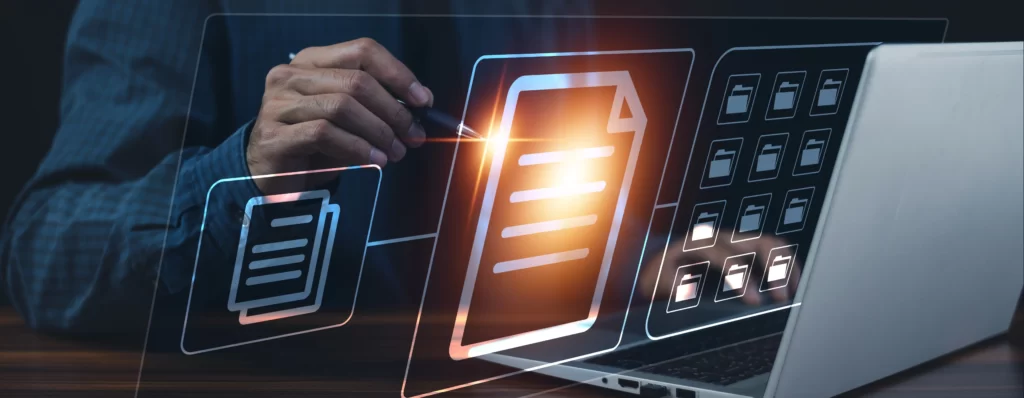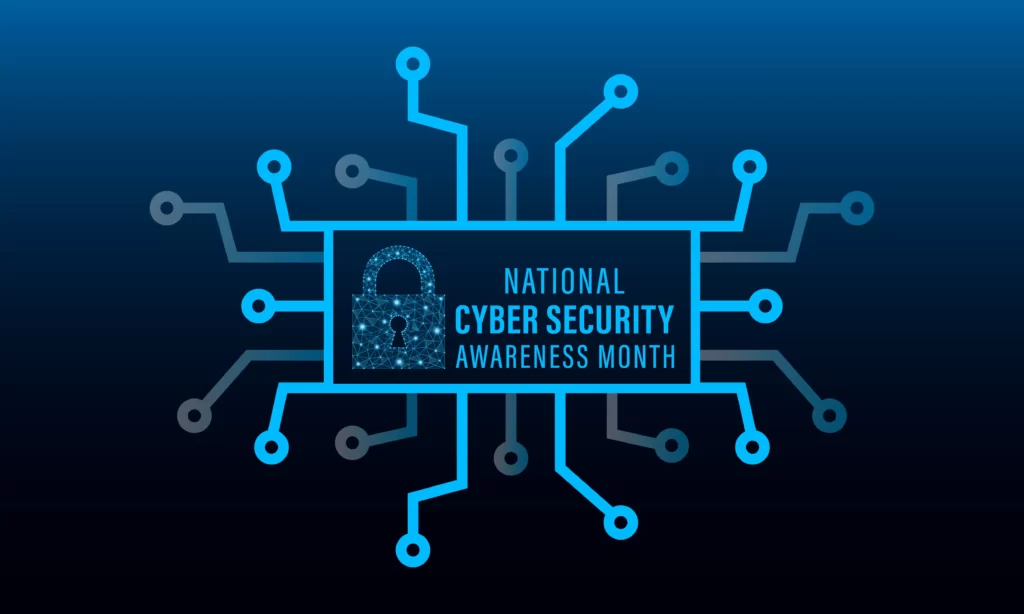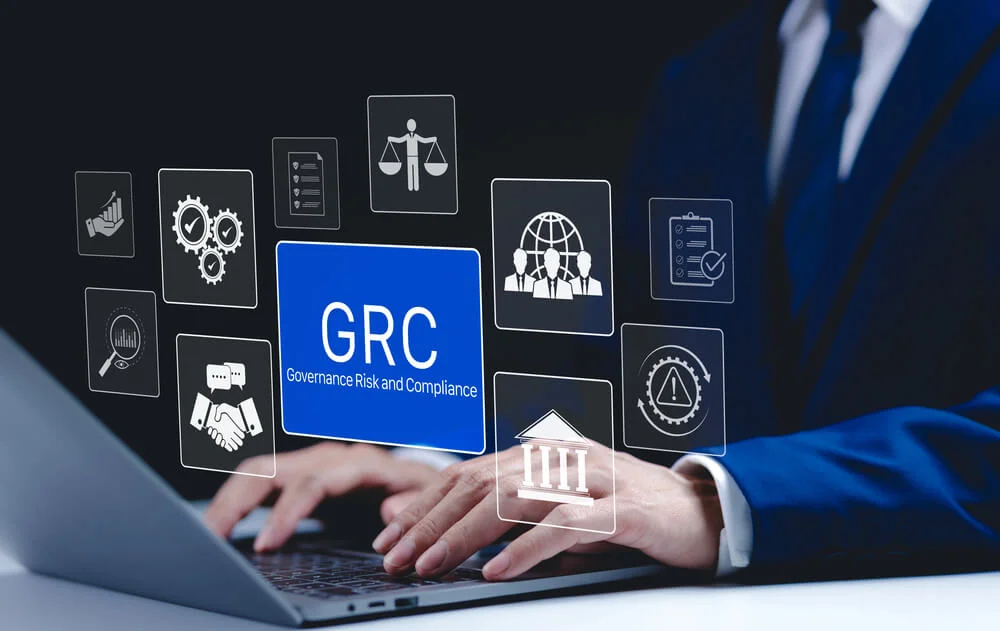Cybersecurity Awareness Month 2023: More Crucial Than Ever
October rolls around, and with it comes the cool fall air, pumpkin-spiced delicacies, and for the tech-savvy among us, Cybersecurity Awareness Month. As our world increasingly shifts towards a digital frontier, this month becomes ever more critical. In 2023, cybersecurity awareness isn’t just a topic for IT professionals and policy wonks; it’s a vital concern for businesses, governments, and individuals worldwide. The digitization of our lives has accelerated, and so too have the threats that lurk in the shadows. This year, Cybersecurity Awareness Month offers a unique opportunity to reflect, learn, and adapt. Let’s explore why this month is pivotal in 2023 and the essential takeaways that organizations should internalize.

Rising Threat Landscape, Need to Raise Cybersecurity Awareness
In the age of rapid technological advancements, we here at Compyl believe that the cybersecurity landscape is shifting at an accelerated pace. The trifecta of artificial intelligence, quantum computing, and the explosion of connected devices is redefining both the opportunities and the challenges faced by organizations globally.
Artificial Intelligence (AI):
The integration of AI into business processes and decision-making tools has ushered in a new era of efficiency and automation. However, the same capabilities that make AI a game-changer for industries also make it a potent tool for malicious actors.
Enhanced Attack Capabilities: Cybercriminals can leverage AI to rapidly identify system vulnerabilities, launch large-scale automated attacks, or even customize malware that adapts in real-time to defense mechanisms.
Deepfakes & Misinformation: AI-driven ‘deepfakes’—realistic but entirely fabricated audio and video content—can be used to spread misinformation, tarnish reputations, or even engage in corporate espionage.
Quantum Computing:
Quantum computers, though still in their nascent stage, pose a looming threat to the bedrock of internet security—encryption.
Breaking Encryption: Quantum machines have the potential to decrypt even the most robust encryption methods used today, such as RSA, putting vast amounts of sensitive data at risk.
Dual-use Technology: While quantum computing can be a boon for fields like medicine and logistics, it can simultaneously supercharge hackers’ capabilities.
Connected Devices (IoT):
The Internet of Things (IoT) era has seen everything from refrigerators to wristwatches become interconnected and smart.
Vast Attack Surface: Each device, often manufactured without stringent security standards, becomes a potential entry point for attackers, expanding the attack surface exponentially.
Interconnected Risks: A breach in one device can pave the way for intrusions into more secured systems or data repositories, as seen in cases where seemingly innocuous devices served as gateways to major cyber attacks.
Given these evolving dynamics, it is paramount for organizations to remain vigilant. The onus is on businesses to:
Invest in Ongoing Training: To equip their teams with the knowledge and tools to identify and counteract emerging threats.
Adopt Proactive Defense: To anticipate threats rather than merely react to them, and to continuously update their cybersecurity strategies in alignment with technological advancements.
In essence, while the digital revolution of 2023 offers unprecedented growth opportunities, it also necessitates a renewed focus on securing our digital frontiers against the complex and ever-evolving cyber threats of this modern age.
The New Normal of Remote Work
The 21st century has witnessed a drastic shift in workplace dynamics, especially after the global pandemic. As organizations embraced remote and hybrid work models, the boundaries of what constituted the workplace began to blur, leading to a profound impact on cybersecurity dynamics.
Expansion of the Cybersecurity Perimeter:
Traditionally, corporate cybersecurity focused on protecting a confined and clearly defined network – the office. Remote work has effectively dismantled these boundaries.
Diverse Network Access Points: Employees working remotely often connect using various networks – from home Wi-Fi to coffee shop networks, each with its security protocols (or lack thereof).
Multiple Devices: The device spectrum has broadened. Apart from company-issued laptops, there are personal computers, tablets, and smartphones, all accessing company data.
Secure Connections and VPNs:
Virtual Private Networks (VPNs) have become the backbone of remote work cybersecurity.
Encrypted Communication: VPNs ensure that data transmitted between the remote worker and the company server is encrypted, safeguarding it from potential eavesdroppers.
Masked IP Addresses: By masking the user’s IP address, VPNs also help in protecting the user from potential targeted attacks based on their location or browsing habits.
Endpoint Security Emphasis:
Endpoint security has surged to the forefront, emphasizing the protection of individual devices, the ‘endpoints’, that access the company network.
Device Authentication: It’s crucial that only authenticated devices can access company resources. This prevents unauthorized devices, which may be compromised, from gaining access.
Regular Updates: Ensuring that all devices have the latest security patches and software updates is crucial. An outdated system can have vulnerabilities that can be exploited by cybercriminals.
Additional Considerations:
Cloud Security: With the increased use of cloud services for data storage and collaboration, ensuring robust cloud security practices becomes paramount. This includes encrypted storage, secure access controls, and regular audits.
Employee Training: Human error remains a significant vulnerability. Regular training sessions to make employees aware of potential threats like phishing and best practices for secure remote work are essential.
Multi-factor Authentication (MFA): A simple yet effective tool. By requiring multiple forms of verification, MFA adds an additional layer of security, ensuring that even if login credentials are compromised, unauthorized access remains difficult.
As remote work solidifies its position as a mainstay in the modern work culture of 2023, the strategies to safeguard organizational data need to evolve simultaneously. In this era, a robust cybersecurity framework isn’t just a technological requirement but a fundamental pillar ensuring organizational resilience and longevity.

Regulatory Compliance in the Cyber Era
As the digital age unfolds, there’s an unmistakable nexus between the intricacies of cybersecurity and the role of governance. Governments and international bodies have realized that, in the age of data breaches and cyber threats, regulatory oversight is not just an administrative requirement but a cornerstone of a secure digital ecosystem.
Global Landscape of Cybersecurity Regulations:
Across the world, there’s been a marked shift in the regulatory landscape. These regulations aren’t isolated policies but are integrated frameworks designed to fortify cyber defenses, promote transparency, and instill accountability.
GDPR (General Data Protection Regulation): Europe’s landmark regulation, the GDPR, set a precedent by placing data privacy at the forefront. It not only mandates stringent data protection protocols but ensures that businesses are accountable for any breaches, with penalties that can be a significant percentage of global revenues.
CCPA (California Consumer Privacy Act): Even within the United States, states like California have pioneered robust data privacy laws, showcasing the importance of personal data protection.
Other Regional Initiatives: From the Personal Data Protection Act in Singapore to the Data Protection Act in the UK, nations are bolstering their legal frameworks to ensure that organizations operating within their borders prioritize cybersecurity.
Beyond Penalties: The Value of Trust and Reputation:
While penalties can be severe, the real cost of non-compliance transcends financial repercussions.
Consumer Trust: In a digital-first world, trust is a currency. Once lost, it’s hard to regain. A single data breach, especially if it emerges that the organization was non-compliant, can erode years of customer trust.
Brand Reputation: In an interconnected global market, news travels fast. Non-compliance and resultant breaches can tarnish a brand’s image, influencing not just current stakeholders but deterring potential partners and clients.
Operational Continuity: Non-compliance can lead to legal entanglements and disruptions, affecting the smooth functioning of an organization. Moreover, post a breach, significant resources are diverted to damage control rather than growth or innovation.
Proactive Compliance as a Strategic Move:
Forward-thinking organizations recognize that compliance isn’t a mere box-ticking exercise. It’s a strategic move.
Risk Mitigation: By aligning with regulations, organizations can identify and rectify vulnerabilities before they morph into full-blown crises.
Business Enabler: Compliance can be a competitive advantage. Organizations that adhere to the highest standards can use this as a differentiator in the marketplace, showcasing their commitment to customer and data protection.
Stakeholder Assurance: Investors, partners, and clients often feel more comfortable engaging with entities that are demonstrably compliant. It offers an assurance of the organization’s commitment to best practices.
In the intricate dance of global commerce in 2023, regulatory compliance in cybersecurity stands out as a pivotal player. By weaving compliance into their strategic fabric, organizations not only safeguard their operations but elevate their stature in the global arena, signaling integrity, foresight, and resilience.
The Human Factor in Cybersecurity
In the complex mosaic of cybersecurity, one element often stands out both as a linchpin and a weak link: the human factor. While our technological defenses grow ever more sophisticated, they are frequently matched, and occasionally outpaced, by the cunning of malicious actors. Often, the entry points for these threats aren’t necessarily technical flaws but human vulnerabilities.
Understanding the Human Vulnerability:
Predictable Patterns: Humans, by nature, often follow patterns and seek convenience. This predictability can manifest in simple behaviors, like reusing passwords across platforms or ignoring software updates.
Social Engineering: Manipulative tactics, like phishing or baiting, leverage human psychology. Attackers exploit emotions such as fear, curiosity, or the natural inclination to trust, to trick individuals into revealing sensitive information or making detrimental actions.
Lack of Awareness: Not everyone is tech-savvy, and many remain unaware of the full spectrum of cyber threats, leading to inadvertent risky behaviors.
Strategies to Fortify the Human Defense:
Regular Training: Continuous education sessions are crucial. This includes refreshing employees’ knowledge about standard threats and updating them on emerging ones. Training shouldn’t be a one-time event but an ongoing process.
Simulated Phishing Tests: Creating mock phishing scenarios helps gauge employee preparedness and reinforces the training. When employees encounter these simulations and, on occasion, fall for them, it provides a real-world context to the importance of vigilance.
Promoting a Security-first Culture: This goes beyond mere training. Leadership must emphasize that cybersecurity is everyone’s responsibility. Recognizing and rewarding vigilant behavior, sharing stories of thwarted attacks, and open discussions about potential threats can foster a culture where security becomes second nature.
Clear Reporting Mechanisms: Employees should have a clear and straightforward process to report any suspicious activity. Whether they’ve received a dubious email or clicked on a questionable link, they should know whom to alert without fear of repercussions.
Layered Security Approach: While human training is essential, it should be complemented by robust technical defenses, like multi-factor authentication and automated threat detection. This ensures that even if human error occurs, there are additional layers of defense in place.
Personal Accountability: Encourage employees to see the bigger picture. A breach doesn’t just affect a faceless corporation; it can lead to job losses, financial hardships, and compromised personal data. When the risks are personalized, individuals are more likely to take them seriously.
The confluence of technology and human awareness forms the bedrock of a resilient cybersecurity framework. As the digital landscape of 2023 continues to evolve, understanding and addressing the human factor becomes not just a recommendation but a mandate. By transforming employees from potential vulnerabilities into vigilant defenders, organizations can significantly bolster their cybersecurity arsenal.

Navigating Supply Chain Threats in 2023
The digital ecosystem’s complexity has grown exponentially, with organizations becoming more interconnected than ever. The supply chain, a crucial cog in this machinery, has emerged as both a strength and a potential vulnerability. As 2023 has poignantly illustrated, attacks targeting supply chains can ripple across industries, affecting not just the direct victim but a multitude of stakeholders downstream and upstream.
The Nature of Supply Chain Threats:
Multi-tiered Complexity: Modern supply chains aren’t linear but complex webs of vendors, sub-vendors, manufacturers, logistics providers, and more. An attack on even the smallest entity can have disproportionate repercussions across the chain.
Third-party Software: Organizations often deploy software solutions from third-party vendors. Vulnerabilities in these can provide a backdoor for cybercriminals into an otherwise secure system.
Hardware Tampering: While software vulnerabilities are a concern, so is the hardware. Compromised components or devices can be introduced into an organization’s infrastructure, paving the way for cyberattacks.
Strategies for Fortifying Supply Chain Security:
Comprehensive Due Diligence: Before onboarding any new partner or vendor, organizations must conduct thorough cybersecurity assessments. This includes evaluating their security protocols, past breach history, and their own third-party associations.
Continuous Monitoring: The initial due diligence is just the starting point. Regular security audits, vulnerability assessments, and penetration tests can help identify and rectify potential weak points before they’re exploited.
Establish Clear Security Protocols: Collaboratively develop security standards and protocols with all partners in the supply chain. This ensures a unified defense strategy where each entity knows its responsibilities and obligations.
Incident Response Planning: Prepare for worst-case scenarios. Jointly create incident response plans that outline steps to be taken in the event of a breach. This can significantly reduce response time and mitigate potential damages.
Transparency and Communication: Foster an environment where partners and vendors feel comfortable sharing potential threats or vulnerabilities. An open line of communication can act as an early warning system, allowing for proactive threat management.
Secure Software Development Life Cycle (SDLC): If you or your partners develop software, ensuring a secure SDLC can reduce vulnerabilities in the end product. This includes regular code reviews, threat modeling, and security testing.
Contractual Obligations: Integrate cybersecurity clauses into contracts. These can mandate regular security audits, dictate the standards to be maintained, and define liabilities in case of security lapses.
In the interconnected commercial landscape of 2023, the adage “a chain is only as strong as its weakest link” has never been more pertinent. Supply chain threats, if not addressed, can compromise the very foundations of an organization’s operations and reputation. However, with foresight, collaboration, and strategic planning, organizations can navigate this complex terrain, ensuring not just their security but fortifying the entire supply chain against potential threats.
The Rise of Zero Trust in 2023
In the intricate landscape of cybersecurity, the emergence of the Zero Trust model stands as a transformative shift. Rooted in the simple yet powerful principle of “never trust, always verify,” this model challenges traditional notions of network security. Instead of the erstwhile “trust but verify” stance, where once inside the perimeter everything is trusted, Zero Trust posits that trust should be consistently earned and never given outright. As the dynamics of 2023 unfold, the adoption of Zero Trust becomes not just advantageous but essential for organizations aiming for holistic security.
Breaking Down the Zero Trust Model:
Perimeter-less Security: Traditional models often functioned on the premise of securing the perimeter, likened to a castle’s walls. Zero Trust recognizes that in today’s digital age, the ‘castle’ has no defined boundaries, and threats can originate from both outside and within.
Micro-segmentation: Zero Trust is all about limiting access. By creating micro-segments within the network, access to critical resources is limited only to those entities that absolutely need it, reducing the potential attack surface.
Identity and Access Management (IAM): In the Zero Trust model, identity validation is paramount. This involves rigorous identity verification processes and granular access controls to ensure that users have only the necessary and appropriate privileges.
Benefits of Adopting Zero Trust:
Adaptive Protection: Given its dynamic nature, Zero Trust can adjust and react to the changing threat environment in real-time, offering adaptive protection against varied threats.
Reduced Insider Threats: By not granting implicit trust to insiders, the risk of insider threats, whether malicious or inadvertent, is significantly mitigated.
Enhanced Compliance: With granular control over data access and a robust security stance, organizations find it easier to meet regulatory and compliance standards.
Visibility and Analytics: With continuous monitoring and verification processes, organizations gain deeper insights into their network activity, enabling quicker threat detection and response.
Implementing Zero Trust in 2023:
Conduct a Thorough Assessment: Before transitioning, organizations should map out their current network, understand data flows, and identify critical assets. This sets the foundation for a customized Zero Trust model.
Choose the Right Tools: The market is replete with Zero Trust solutions. From multi-factor authentication tools to advanced network monitoring solutions, choosing the right tools based on organizational needs is crucial.
Educate and Train: As with any shift, there’s a learning curve involved. Regular training sessions and workshops can help employees understand and adapt to the new security protocols.
Continuous Review: The cybersecurity landscape is ever-evolving, and so should be the Zero Trust model. Regular reviews and updates ensure that the architecture remains robust and relevant.
The evolution of cyber threats in 2023 and beyond underscores the need for a proactive and dynamic approach to security. In this context, Zero Trust emerges as a beacon, guiding organizations towards a future where trust is a calculated decision, assets are vigilantly safeguarded, and the security paradigm is continually recalibrated in the face of emerging challenges.

A Proactive Stance for Cybersecurity Awareness Month 2023
As we draw the curtains on this year’s Cybersecurity Awareness Month, it’s imperative to reflect on its overarching message. While the word “awareness” stands front and center, the essence of this month extends far beyond mere cognizance. 2023’s digital landscape, rife with innovations and intricacies, underscores the urgency of transforming this awareness into actionable strategies and concrete measures.
More Than Awareness, A Call to Arms:
The digital realm is ever-evolving, characterized by breathtaking advancements and parallel challenges. In this dynamic milieu, mere awareness, while crucial, is insufficient. Understanding the threats is but the first step; the crux lies in preemptively strategizing and robustly safeguarding against them.
Empowering Organizations:
Cybersecurity Awareness Month serves as a reminder, not just of the vulnerabilities that exist but of the tools, strategies, and best practices at our disposal. It beckons organizations to:
Invest in Cutting-edge Solutions: Beyond traditional firewalls and antivirus programs, this is the time to explore advanced solutions like AI-driven threat detection and state-of-the-art encryption tools.
Foster a Security-centric Culture: A chain is as strong as its weakest link. Ensuring that every member, from top-tier executives to interns, is aligned with the organization’s security ethos is paramount.
Engage in Collaborative Defense: Cybersecurity isn’t a solitary endeavor. Engaging with industry peers, participating in threat intelligence sharing, and collaborating on best practices can amplify collective defenses.
Championing a Holistic Approach:
While technical defenses are vital, the human aspect can’t be sidelined. This month is also about reinforcing the importance of continuous training, simulated threat scenarios, and fostering a vigilant mindset amongst teams. It’s about creating environments where employees feel empowered to report anomalies and are rewarded for proactive security behaviors.
A Vision for the Future
As October winds down, the emphasis shouldn’t be on the conclusion of an awareness month but on the commencement of a year-round commitment. Cyber threats don’t restrict themselves to a calendar month, and neither should our vigilance.
Cybersecurity Awareness Month 2023 is more than a mere event; it’s a profound call to action. It urges organizations around the world to not only equip themselves with advanced tools but also to foster a mindset of vigilance and proactiveness. And as we progress through the year and into the future, our focus should extend beyond mere awareness campaigns. As threats continue to evolve, Compyl remains a trusted partner for organizations looking to enhance their security and compliance programs. Speak with one of our security or compliance specialists today and learn how our cutting-edge solution has helped many organizations enhance their security programs.




